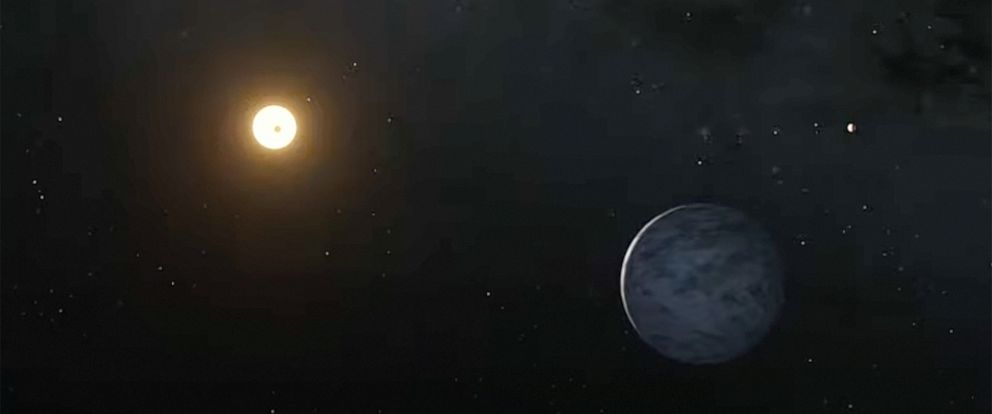
TOI-700 is an M2-type star around 102 light-years away in the southern constellation of Dorado.
Otherwise known as UCAC3 49-21611 and 2MASS J06282325-6534456, the star is roughly 40% of the Sun’s mass and size and about half its surface temperature.
In 2020, astronomers announced the discovery of three exoplanets orbiting TOI-700.
The innermost planet, TOI-700b, is almost exactly Earth-size, is probably rocky, and completes an orbit every 10 days.
TOI-700c is a gas giant about 2.6 times the size of Earth, and orbits the parent star once every 16 days.
The outermost planet, TOI-700d, is 1.1 times the size of Earth, and has an orbital period of 38 days. It lies within its star’s habitable zone, receives from the star 86% of the energy that the Sun provides to Earth, and has a surface temperature of minus 3 degrees Celsius (26 degrees Fahrenheit).
The planets are tidally locked to the star, which means they rotate once per orbit so that one side is constantly bathed in daylight.
“This is one of only a few systems with multiple, small, habitable-zone planets that we know of,” said Dr. Emily Gilbert, an astronomer at NASA’s Jet Propulsion Laboratory.
“That makes the TOI-700 system an exciting prospect for additional follow up.”
“The newly-discovered planet, TOI-700e, is about 10% smaller than planet TOI-700d, so the system also shows how additional TESS observations help us find smaller and smaller worlds.”
“If the star was a little closer or the planet a little bigger, we might have been able to spot TOI-700e in the first year of TESS data,” said Ben Hord, a doctoral candidate at the University of Maryland, College Park and a graduate researcher at NASA’s Goddard Space Flight Center.
“But the signal was so faint that we needed the additional year of transit observations to identify it.”
TOI-700e, which may also be tidally locked, takes 28 days to orbit its star, placing the planet between TOI-700c and TOI-700d in the so-called optimistic habitable zone.
“Follow-up study of the TOI-700 system with space- and ground-based observatories is ongoing and may yield further insights into this rare system,” Dr. Gilbert said.
“TESS just completed its second year of northern sky observations,” added Dr. Allison Youngblood, an astrophysicist at NASA’s Goddard Space Flight Center.
“We’re looking forward to the other exciting discoveries hidden in the mission’s treasure trove of data.”








